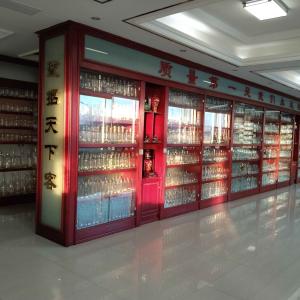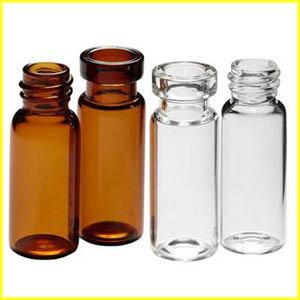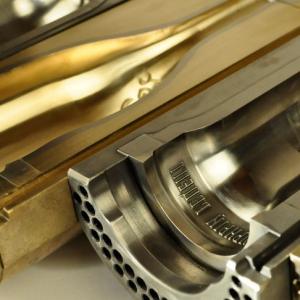The important step in making glass bottles/jars is cutting.
The production process of glass bottles/jar
Glass bottle production process mainly includes: ① raw material pre-processing. The massive raw materials (quartz sand, soda, limestone, feldspar, etc.) are crushed to dry the wet raw materials, and the iron containing raw materials are treated with iron removal to ensure the quality of glass. ② Preparation of compound. (3) melted. The glass material is heated at high temperature (1550°1600 degrees) in the pool kiln or the pool furnace, so that it forms a uniform, no bubble, and meets the molding requirements of liquid glass. (4) shape. cutting, and Put the liquid glass into the mold to make the glass products of the required shape, such as plate, various utensils, etc. ⑤ Heat treatment. Through annealing, quenching and other processes, eliminate or produce the stress inside the glass, phase separation or crystallization, and change the structural state of the glass.
Glass bottles generally have rigid marks, which are also made of mold shapes. Glass bottle molding in accordance with the production method can be divided into artificial blowing, mechanical blowing and extrusion molding three.
Glass bottles of various varieties, from the capacity of 1ML small bottles to more than ten liters of large bottles, from round, Square-empty-perfume-oil-bottle-glass-p.html target='_blank'>Square, to special-shaped and handle bottles, from the colorless transparent amber, green, blue, black shade bottles and opaque opaque glass bottles, etc., numerous. In terms of manufacturing process, glass bottles are generally divided into molded bottles (made from a model) and controlled bottles (made from glass). Molded bottles are divided into large bottles (bottle mouth diameter in more than 30MM) and small bottle two categories. The former is used to hold powdery, lump and paste items, while the latter is used to hold liquids. Appearance: Controlled bottles are more transparent than moulded bottles. The bottom of controlled bottles is thinner. The bottom of moulded bottles is thicker and uneven. First of all to design and manufacture mold, glass material with quartz sand as the main raw material, plus other auxiliary materials in high temperature dissolved into liquid, and then injected into the mold, cooling, cutting, tempering, forming glass bottles. Glass bottles generally have rigid marks, which are also made of mold shapes. Glass bottle molding in accordance with the production method can be divided into artificial blowing, mechanical blowing and extrusion molding three. Glass bottles can be divided into the following types according to the composition: one is sodium glass two is lead glass three is borosilicate glass
The main raw materials of glass bottles are natural ore, quartz stone, caustic soda, limestone and so on. Glass bottles have a high degree of transparency and corrosion resistance, contact with most chemicals will not change the material properties. Its manufacturing process is simple, free and changeable shape, high hardness, heat resistance, clean, easy to clean, and can be used repeatedly. Glass bottles are mainly used in food, oil, wine, beverage, seasoning, cosmetics and liquid chemical products, and so on. But glass bottles also have its disadvantages, such as large weight, high transportation and storage costs, impact resistance, etc.





